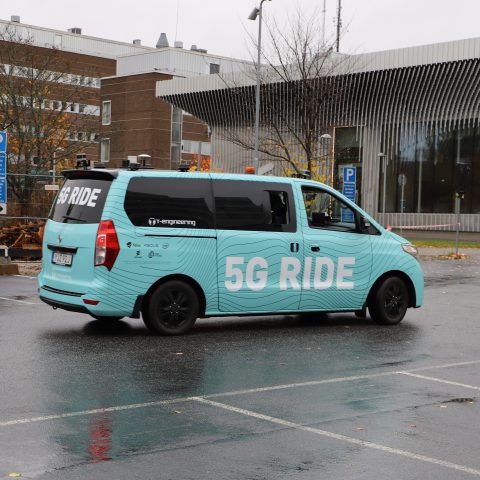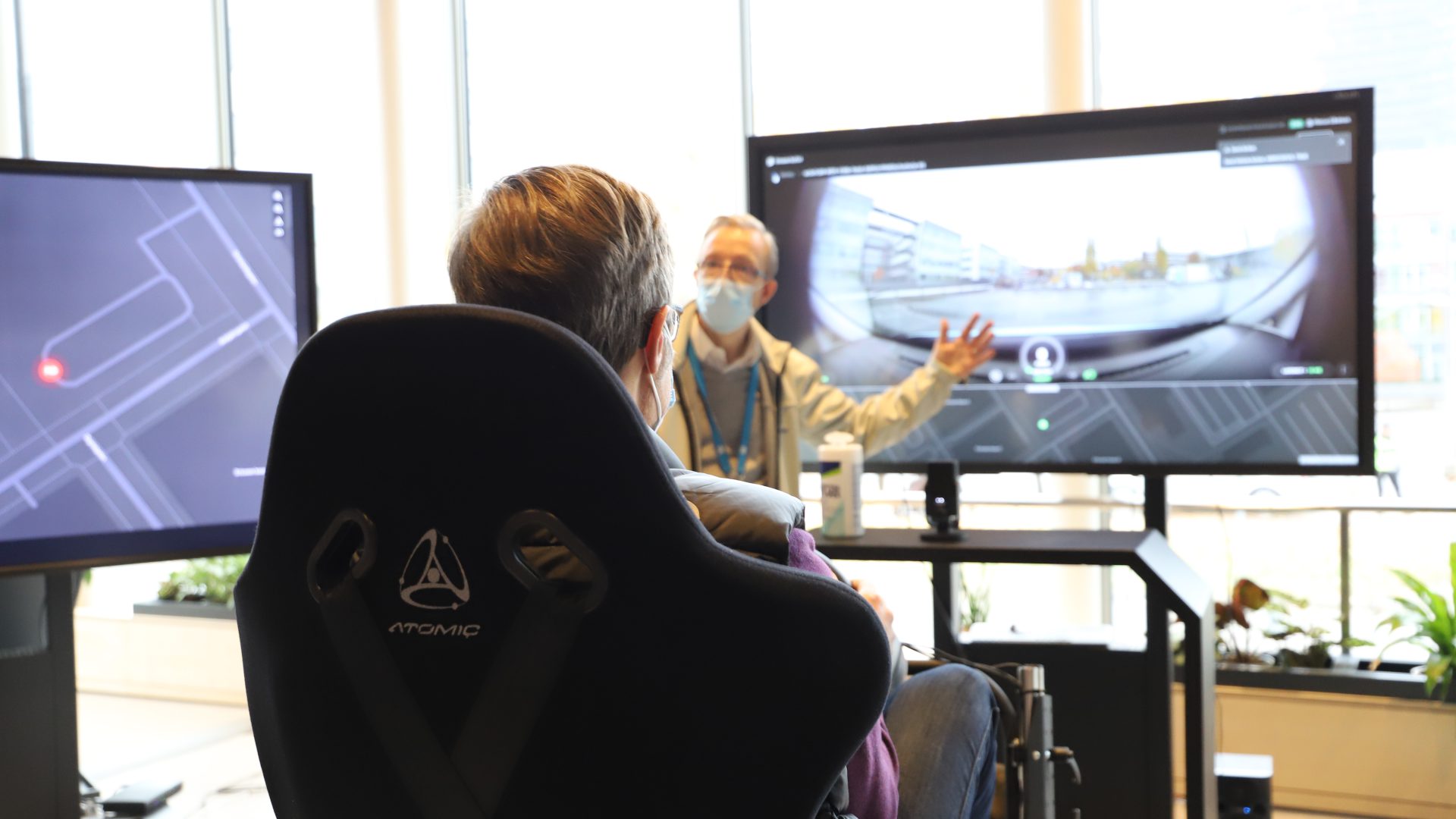Keolis pilots a 5G remotely controlled autonomous electric bus in Stockholm
A 5G remotely controlled autonomous electric minibus has been demonstrated today at Kista Science Centre in Stockholm, using artificial intelligence to monitor the well-being and behaviour of passengers inside the vehicle. The initiative has been carried out by Keolis in partnership with Urban ICT Arena, Telia, Ericsson, Intel and T-engineering. The PTO says that «The trial […]

A 5G remotely controlled autonomous electric minibus has been demonstrated today at Kista Science Centre in Stockholm, using artificial intelligence to monitor the well-being and behaviour of passengers inside the vehicle. The initiative has been carried out by Keolis in partnership with Urban ICT Arena, Telia, Ericsson, Intel and T-engineering.
The PTO says that «The trial aims to show how public transport on autonomous vehicles can be safely and comfortably experienced by future passengers, with Keolis as the remote operator at a supervision tower».
This pilot follows a 5G trial in Royal Djurgården, Stockholm in 2020. Similar trials and services have recently been launched in the Swedish city of Gothenburg, Saint-Quentin-en-Yvelines (Paris region) in France and Montreal in Canada.
Autonomous minibus with 5G connection
On 28 October 2021, Keolis and its partners Ericsson, Telia, Urban ICT Arena, Intel and T-engineering tested a 5G-connected, remotely monitored autonomous electric minibus at Kista Science Centre in Stockholm. The bus is supported by an internal artificial intelligence (AI) system that detects passengers’ well-being and behaviour.
This demonstration explores how real-time data from inside the autonomous vehicle can be transmitted to the centralised supervision (traffic) tower and how, in return, the vehicle responds to its commands with the support of an AI system and extremely high 5G network data speeds. The data, collected by cameras, includes counting passengers and tracking items left behind on the bus. These lost items are signalled to passengers using outboard microphones. The system also detects ‘abnormal’ passenger behaviour and informs the supervision tower if someone is not feeling well. The operator in the supervision tower can then take immediate action by calling a doctor or an ambulance.
The incorporation of artificial intelligence is an important step in preparing for full autonomy and in removing the driver safely from the bus. Keolis and its Swedish partners plan to start running trials without a safety driver on board at the end of 2022/early 2023.
Telia, Ericsson and partners
5G connectivity is provided by Telia in collaboration with Ericsson. Intel is delivering processing power to both the IT system in the vehicles and the supervision tower, as well as the mobile network.

The vehicle, equipped with self-driving technology, is provided by the Swedish technology firm T-engineering.
Bernard Tabary, CEO International at Keolis: “Enhancing everyday lives by making shared mobility smarter and more sustainable is essential for the future of public transport. As we move towards fully autonomous driving, our demonstration in Stockholm represents an important new step by integrating AI detection sensors to create a safe, comfortable passenger experience. We are extremely pleased with this new development in autonomous driving with our partners in Sweden, following successful trials over the past year.”







